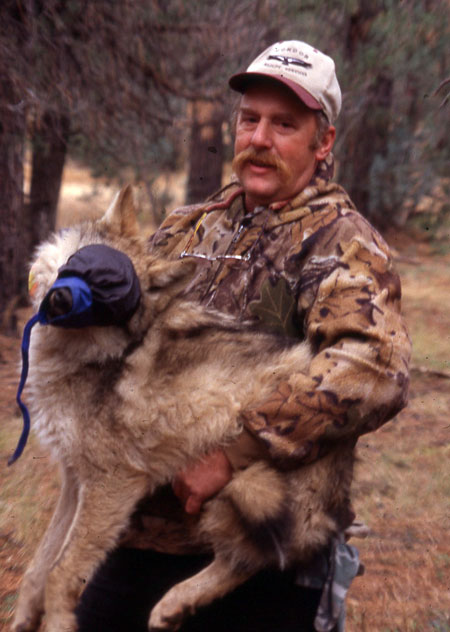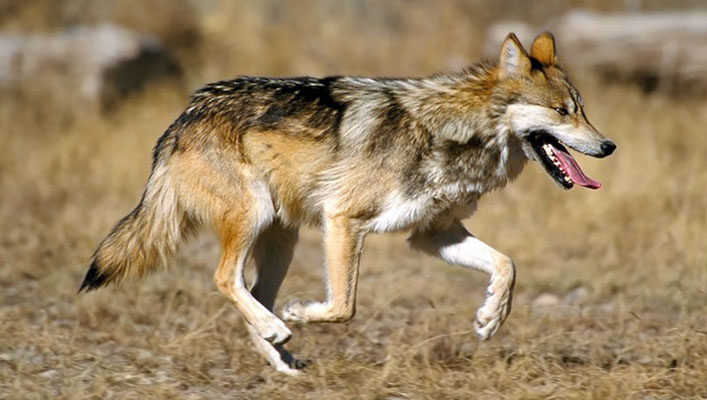Photo By Jim Clark/U.S. Fish and Wildlife Service: A Mexican Gray wolf is pictured here in 2006. There were 114 wolves recorded in Arizona and New Mexico at the beginning of 2018, the most since the reintroduction of the endangered animal began in 1998. The most recent count done this year puts the number of known wolves at 196.
Column By Dexter K. Oliver
I recently received an email from the Arizona Game and Fish Department (AZGFD) informing me that the population of reintroduced Mexican gray wolves had increased by 5% in 2021. This raises the number of known wolves on the ground in Arizona and New Mexico to 196. Wildlife populations regularly wax (grow) and wane (diminish) in numbers so next year the results could be smaller or possibly a bit larger.
After two dozen years of 24/7 effort on the part of the U.S. Fish and Wildlife Service (FWS) and AZGFD biologists and countless millions of dollars spent, that seems like a small return on the investment of taxpayer dollars. Nor does it reflect the blood on the ground, the litany of slaughtered or maimed domestic livestock and pets suffered by rural folks unlucky enough to live within the reintroduction area.
It was the city dwellers (it usually is) who were persuaded to back the Mexican gray wolf reintroduction project. They wanted to hear a wolf howl during a weekend in the White Mountains or Gila National Forest then scurry back to their paved and policed environs where their lapdogs would have no fear of being processed into wolf scat. They have no skin in the game. But their money keeps “environmental advocates” like the Center for Biological Diversity, with its platoon of lawyers, constantly litigating and siphoning off much-needed money from wildlife agencies. It is a game where urban inhabitants employ dictators against their back-country brethren.
The idea of an authoritarian despot in today’s world brings about immediate images of a Vladimir Vladimirovich Putin, or perhaps an American wannabe like our last president to lose an election, not a seemingly benign federal or state wildlife agency. But money and power, and the abuse of these, are the same driving forces of all of them. Putin’s military failures in Ukraine are just a much higher criminal level of the blunders plaguing the FWS and AZGFD in their so-called “reintroduction” of wolves.

When animals are routinely handled by humans, given physical exams by humans, and medicated by humans to keep them alive they lose their “wild” designation. When they are fed supplemental food, tracked, hazed, captured, and juggled between the forest and holding pens with even more human contact they become unwilling participants in an open-air zoo. The keepers work for the wildlife agencies and they hide the truth about their lack of success from the public with smoke screens and funhouse mirrors. Hey, it beats flipping burgers at MacDonald’s.
The facts are that many ranchers, hound hunters, and other rural people have lost their property and livelihoods thanks to the restrictive laws that protect these zoo animals. Those who hold sway over the very lives of others almost always overstep their boundaries. In the case of the great Mexican gray wolf dumping it is the federal and state agencies that change the goalposts, stating they need more and more animals on the ground, even in areas of AZ and NM that never had real wolves inhabiting them.
It is science trumped by emotion and fueled by the desire for even more power and money. Wildlife is just a pawn in the contest.
Dexter K. Oliver is a freelance writer and wildlife consultant living in Duncan, Arizona.
The opinions expressed in this editorial are those of the author.








